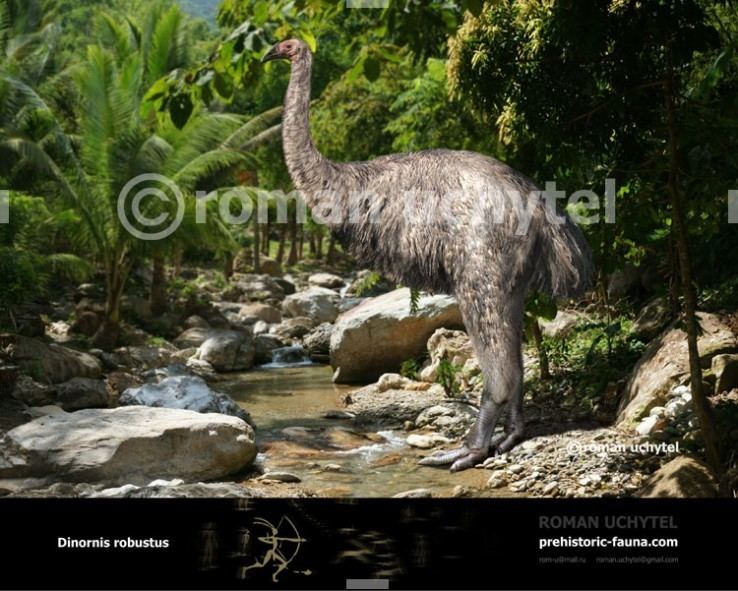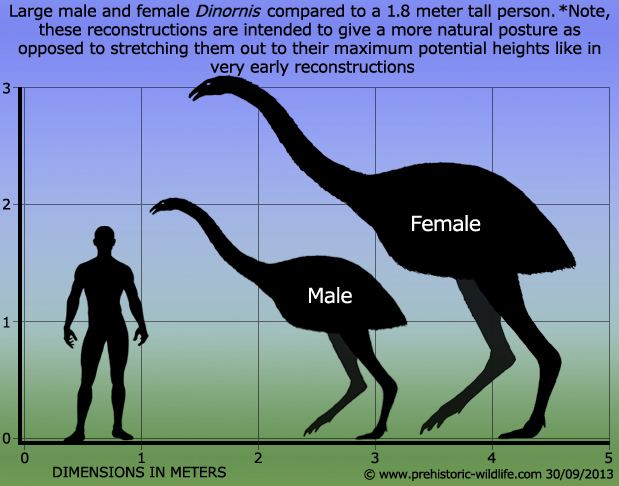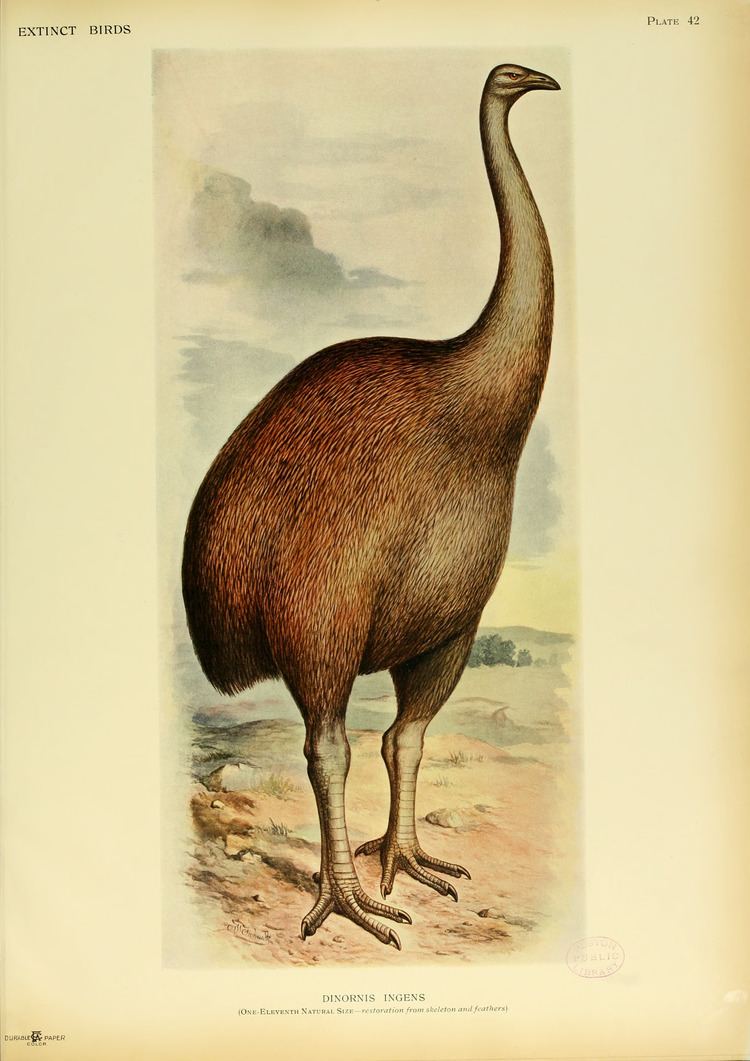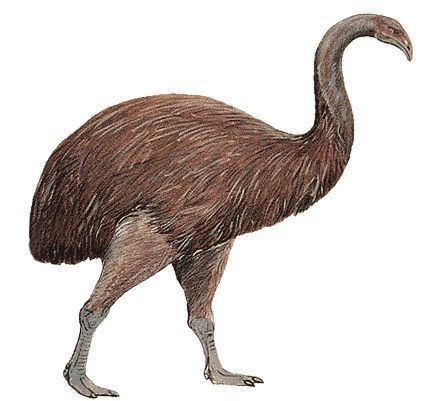Family †Dinornithidae Phylum Chordata Rank Genus | Superorder Paleognathae Scientific name Dinornis Higher classification Moa Order Moa | |
 | ||
Lower classifications | ||
Prehistoric beasts giant moa dinornis documentary
The giant moa (Dinornis) is an extinct genus of birds belonging to the moa family. Like all Moas it was a member of the order Dinornithiformes. It was endemic to New Zealand. Two species of Dinornis are considered valid, Dinornis novaezealandiae of the North Island, and Dinornis robustus of the South. In addition, two further species (new lineage A and lineage B) have been suggested based on distinct DNA lineages.
Contents
- Prehistoric beasts giant moa dinornis documentary
- Tribute to dinornis a k a the moa
- Description
- Sexual dimorphism
- Taxonomy
- Extinction
- References

Tribute to dinornis a k a the moa
Description

Dinornis may have been the tallest bird that ever lived, with the females of the largest species standing 3.6 m (12 ft) tall, and one of the most massive, weighing 230–240 kg (510–530 lb) or 278 kg (613 lb) in various estimates. Feather remains are reddish brown and hair-like, and apparently covered most of the body except the lower legs and most of the head (plus a small portion of the neck below the head). The feet were large and powerful, and the birds had a long neck that allowed them to reach tall vegetation. In relation to its body, the head was small, with a pointed, short, flat and somewhat curved beak.
Sexual dimorphism

It has been long suspected that several species of moa constituted males and females, respectively. This has been confirmed by analysis for sex-specific genetic markers of DNA extracted from bone material. For example, prior to 2003 there were three species of Dinornis recognised: South Island giant moa (D. robustus ), North Island giant moa (D. novaezealandiae) and slender moa (D. struthioides). However, DNA showed that all D. struthioides were in fact males, and all D. robustus were females. Therefore, the three species of Dinornis were reclassified as two species, one each formerly occurring on New Zealand's North Island (D. novaezealandiae) and South Island (D. robustus ); robustus however, comprises three distinct genetic lineages and may eventually be classified as many species. Dinornis seems to have had the most pronounced sexual dimorphism of all moa, with females being up to 150% as tall and 280% as heavy as males.
Taxonomy
The cladogram below follows a 2009 analysis by Bunce et al.:
Extinction

Prior to the arrival of humans, giant moa had had an ecologically stable population in New Zealand for at least 40,000 years. The giant moa, along with other moa genera, were wiped out by Polynesian settlers, who hunted it for food. All taxa in this genus were extinct by 1500 in New Zealand. It is reliably known that the Māori still hunted them at the beginning of the fifteenth century, driving them into sheets and robbing their nests. Although some birds became extinct due to farming, for which the forests were cut and burned down and the ground was turned into arable land, the giant moa had been extinct for 300 years prior to the arrival of European settlers.
